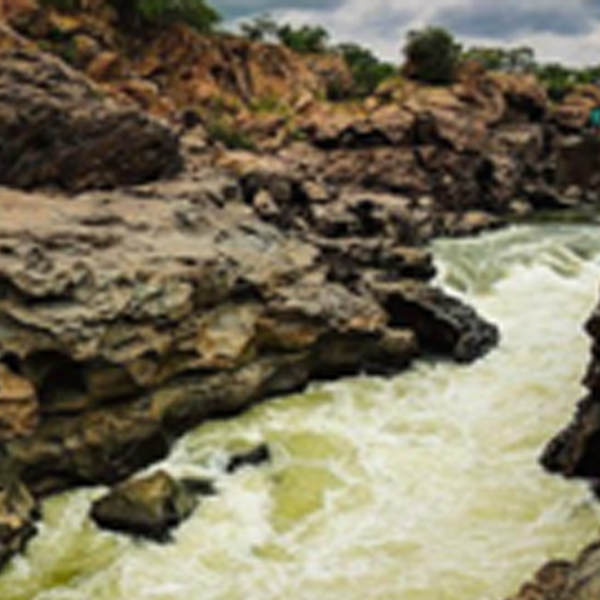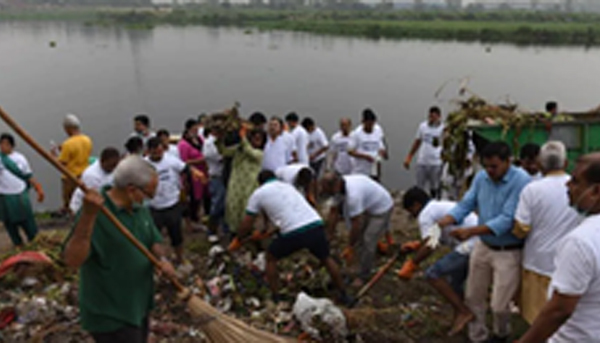Background of Yamuna River
River Yamuna is sixth longest river of India. For past many centuries the river has been integral part of Indian culture. It has been sustaining means of livelihoods to millions. Many, in pursuit of spiritual inspiration venerate it with great hope. But at present, the river is more in news for its highly polluted state. In this blog Heritage India on the line of SANDRP (South Asia Network on Dams, Rivers and Peoples) attempts to presents the picture of the River Yamuna. The blog also briefly mentions the places of cultural, religious, historical and environmental significance on and around the river, pointing out the various factors which has led to present state of the river.


Introduction
River Yamuna originates from frozen Champasar lake located in Bandarpooch Glacier at a height of 6387 meters 31°00′28″N, 78°55′33″E in Har-Ki-Doon mountain range of Uttarkashi in Uttarakhand. It runs through series of snowcapped and forested valleys in Himalaya before entering the Indo-Gangetic plains of north India. After traversing for 1376 km finally the river merges into River Ganga at Prayagraj, Uttar Pradesh.


Sacred places along River Yamuna
The origin point of River Yamuna is famously known as Yamunotri shrine. It is listed among four prominent pilgrimage places (Char Dham) in Uttarakhand and thousands of pilgrims thronged to it every year. In fact Yamnotri is considered as first shrine to be visited while on this pilgrimage. Entire Yamuna valley is full of many sacred shrine and mythological sites devoted to saints and legends of ancient era.


Yamuna River Condition in Delhi
Yamuna enters Delhi through the village of Palla and traverses a distance of 48 kilometers through the capital city. The polluted stretch of 22 kilometers lies between Wazirabad and Okhla.

Yamuna enters Delhi through the village of Palla and traverses a distance of 48 kilometers through the capital city. The polluted stretch of 22 kilometers lies between Wazirabad and Okhla.


Note- During the trail we will unravel the different layers of this river through walks, Interactions with local community as well per formative representations. We will create a dialogue that enables people to see Yamuna through the different lenses of stories, songs, discussions and artistic expressions.
Need for Peoples Participation
Many factors are responsible for the present state of Yamuna, prime being dumping of the drains into the river. Tons of sewage is dumped daily from the numerous towns and cities situated on its bank, along with industrial effluents being released directly, apart from the ritualistic practices which are not eco-friendly. However the lack of people’s awareness and participation in controlling the various factors responsible for pollution is making the pollution go unabated.

Drainage waste that directly
Polluting to Yamuna.

Industrial waste and Phosphate and
surfactants in untreated Sewages.

Hazardous to humans that living
near the bank of Yamuna.

Synthetic Idol immersion Causes
serious harm to Aquatic Environment.
Delhi capital city of India seeks especial attention on in view of clean Yamuna.
There is an urgent need to promote awareness about the causes of Yamuna pollution among people specially those living along its bank and enlist their participation in the clean Yamuna movement. Further in this scheme of things, Delhi very special place as it is considered the most polluted place of the world. Thus there is an urgent need to activity involve the citizens in both rural and urban areas in this movement.
Rationale for Involving Children
Experienced earlier efforts to clean the river Yamuna did not yield the desired result mainly because of undue emphasis on investment in technical aspects without involving people thus. There is an urgent need to shift our approach from engineering-centric to people-centric too. Any action plan for cleaning the river Yamuna must involve the people of the area.

Engineering-centric

People-centric
Experienced earlier efforts to clean the river Yamuna did not yield the desired result mainly because of undue emphasis on investment in technical aspects without involving people thus. There is an urgent need to shift our approach from engineering-centric to people-centric too. Any action plan for cleaning the river Yamuna must involve the people of the area.


Scope and Coverage
The primary objective of the program is to sensitize and encourage student of 5th to 10th standards in the age group of 10 to 17 years for their active participation in mitigating the climate change and to help them to learn, understand and address the impacts of global warming today, at the same time encouraging the change in their attitudes and behavior needed to put up efforts on a more sustainable path in future.


Undoubtedly the climate change is going to affect the next generation adversely. It is therefore necessary to initiate action to arrest the change in deteriorating climate now. The children hence need to be mainstreamed into larger debates on climate change, hazards and vulnerabilities with an overview of the línkages between climates change and sustainable development and perennial flow of river system which is the lifeline of our life.


The Proposal
Heritage India has now drawn a comprehensive program to sensitize school children in the capital city of India, which occupies a unique place in the mind of millions of Indians and is situated on the banks of Yamuna. In fact the history and culture of Delhi is inter-wined with the timeless flow of river Yamuna.
The city is considered most polluted city in the world so in the eye of Heritage India visionary leadership the entire clean Yamuna program has been revamped. It is therefore, in the fitness of the things the Heritage India replicates and scales up the successful experience in sensitizing school children- a potent medium to spread the message among peers and parents- which will contribute immensely to keep the Yamuna Clean in the capital city of India.
As per the government records there are about 6000 school in Delhi about 75% are in rural area. Heritage India proposes to cover about 50 schools in the New Delhi in the first phase both in rural and urban areas. The total coverage is estimated to about 25000 thousand children at an average of 500 students per school. Coverage of this magnitude will soon have a ripple effect that will soon converge into a mass movement in capital city and gradually spread across the entire Yamuna belt.
Cost and Duration
The partial cost of conducting the program inclusive of training of trainers and capacity building @ Rs. 100 per student for about 500 students per school is Rs. 50,000.00. The coverage of 50 schools or 25000 thousand children is estimated to be completed within 5-6 months including the startup time.
Heritage India has already identified 50 schools on the bank side of Yamuna from Wazirabad to Okhla covering 22 K.M. of area.
“Delhi is most historical and capital city of India situated on the bank of holy Yamuna.”



